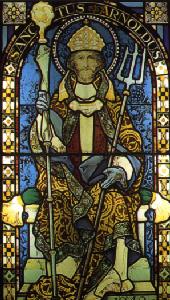Mash rake on:
[Wikipedia]
[Google]
[Amazon]
 A mashing fork, mash rake or mashing rake is a tool traditionally used in the
A mashing fork, mash rake or mashing rake is a tool traditionally used in the
 The traditional mash rake is often used as a symbol of brewers, in much the same way that the
The traditional mash rake is often used as a symbol of brewers, in much the same way that the
File:Mashtun-empty.jpg, An empty
 A mashing fork, mash rake or mashing rake is a tool traditionally used in the
A mashing fork, mash rake or mashing rake is a tool traditionally used in the mashing
In brewing and distilling, mashing is the process of combining a mix of ground grains – typically malted barley with supplementary grains such as corn, sorghum, rye, or wheat – known as the "grain bill" with water and then heating the mixtu ...
process of brewing
Brewing is the production of beer by steeping a starch source (commonly cereal grains, the most popular of which is barley) in water and #Fermenting, fermenting the resulting sweet liquid with Yeast#Beer, yeast. It may be done in a brewery ...
and distilling
Distillation, or classical distillation, is the process of separating the components or substances from a liquid mixture by using selective boiling and condensation, usually inside an apparatus known as a still. Dry distillation is the heating ...
. The mashing fork is used to mix the mash by hand to ensure the various grains are properly homogenized and wet everywhere, so no starches are wasted. In modern parlance, the term 'rake' is used most commonly to refer to mechanical knives used to cut the mash bed to optimize the efficiency of the runoff and 'fork' is most commonly used to refer to the traditional, mostly archaic, tool.Background
Before the industrial age, the mash fork was an instrument made of wood with a long handle, somewhat resembling anoar
An oar is an implement used for water-borne propulsion. Oars have a flat blade at one end. Rowers grasp the oar at the other end.
The difference between oars and paddles is that oars are used exclusively for rowing. In rowing the oar is connecte ...
with large holes in the blade. This type of mash rake (often called a mash paddle) is still used by homebrewers. Large modern brewers, however, use mechanical apparatus to mix the mash instead of manual labour.
As a symbol
 The traditional mash rake is often used as a symbol of brewers, in much the same way that the
The traditional mash rake is often used as a symbol of brewers, in much the same way that the scythe
A scythe ( ) is an agricultural hand tool for mowing grass or harvesting crops. It is historically used to cut down or reap edible grains, before the process of threshing. The scythe has been largely replaced by horse-drawn and then tractor m ...
is used as a symbol of agriculture or the harvest. Saint Arnold of Soissons
Arnold (Arnoul) of Soissons or Arnold or Arnulf of Oudenburg (c. 1040–1087) is a saint of the Catholic Church, the patron saint of hop-pickers, Belgian brewers.
Biography
Arnold, born in Brabant, the son of a certain Fulbertus was first a c ...
, the patron saint of Belgian brewers, is often depicted with a mash rake. Many breweries or master-brewers, including Hoegaarden Brewery
Hoegaarden Brewery (, ) is a brewery in Hoegaarden, Belgium, and the producer of a witbeir, which is different from a wheat beer. Hoegaarden de-emphasizes hops, and is unfiltered, giving it the hazy, or milky, appearance--which makes it a wit ...
, incorporate the mash rake into their logo.
Gallery
mash tun
In brewing and distilling, mashing is the process of combining a mix of ground grains – typically malted barley with supplementary grains such as corn, sorghum, rye, or wheat – known as the "grain bill" with water and then heating the ...
showing the integrated power-rake.
File:Fourquet bouleau.jpg, Homemade mash paddle in birch wood.
References
External links
{{Commonscat-inline, Mash rakes Brewing